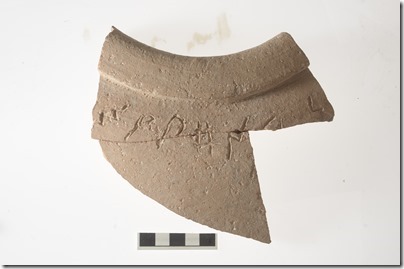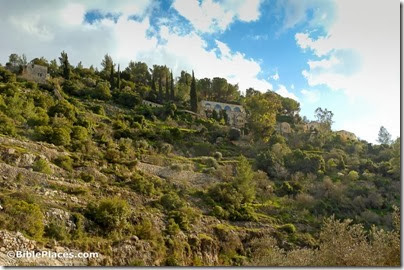As 2013 winds down, I thought it would be worthwhile to review the top discoveries and stories of the year in the world of biblical archaeology and geography. Not only is the review helpful in refreshing the memory, it also makes it more possible to discern what was more important and what was less.
Today we will review major discoveries, top technology-related stories, and losses. Tomorrow we will survey significant stories, noteworthy posts, and favorite resources of the year.
These lists are subjective, first by the fact that they had to be chosen for inclusion in a post on this blog this year, and second by the process of selecting the best. Readers are welcome to suggest other significant stories in the comments below. These lists are organized chronologically.
Top 10 Discoveries of 2013:
Royal Architecture Found Near Jerusalem
Large Stone Structure Discovered on the Floor of the Sea of Galilee
Unique Ritual Bath Complex Excavated in Jerusalem
Earliest Alphabetic Inscription in Jerusalem Discovered
Sphinx Fragment Discovered at Hazor
Claim: Evidence Discovered of the Tabernacle at Shiloh and Evidence of Shiloh’s Destruction
Claimed and Stone Altar Discovered at Shiloh
7th Century BC Inscription Found in City of David
Golden Treasure from Byzantine Period Discovered in Jerusalem
Large Stele of Nebuchadnezzar Discovered at Carchemish
More Discoveries of 2013:
Beautiful Mosaic from Byzantine Period Discovered near Beersheba
Hiding in Jerusalem: New Evidence for Roman Siege
Possible Discovery of Dalmanutha
“Palace of David” Discovered at Khirbet Qeiyafa (and here)
“Prophet Elisha’s House” Discovered at Tel Rehov
Roman Road Discovered near Jerusalem
Early Roman period mansion discovered on Mount Zion
Chalcolithic Temple Discovered at Eshtaol
Hasmonean Building Discovered in City of David
Top Technology-Related Stories of 2013:
Archaeological Archive of Israel Online
LiDAR facilitating research at Petra
Visit Ancient Sites with an Augmented Reality App
Google Maps Exercise for Biblical Geography and Google Earth Exercise for Biblical Geography
Losses:
The continuation of this compilation is here.
Photo courtesy of Dr. Eilat Mazar; photographed by Ouria Tadmor.


